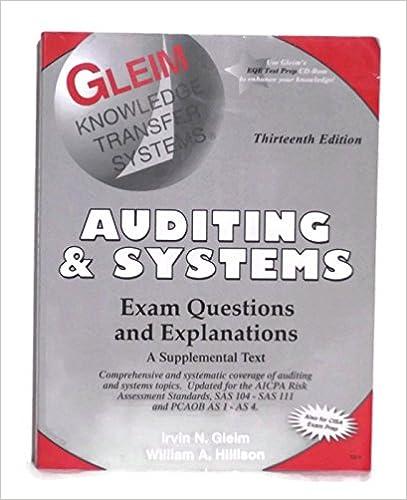Edgerton Company is able to produce two products, G and B, with the same machine in its factory. The following information is available. Product G Product B Selling price per unit $ 90 $ 120 Variable costs per unit 30 72 Contribution margin per unit $ 60 $ 48 Machine hours to produce 1 unit 0.4 hours 1.0 hours Maximum unit sales per month 600 units 200 units The company presently operates the machine for a single eight-hour shift for 22 working days each month. Management is thinking about operating the machine for two shifts, which will increase its productivity by another eight hours per day for 22 days per month. This change would require $6,000 additional fixed costs per month. (Round hours per unit answers to 1 decimal place. Enter operating losses, if any, as negative values.)


0.4 1. Determine the contribution margin per machine hour that each product generates. Product G Product B Contribution margin per unit $ 60.00 $ 48.00 Machine hours per unit 1.01 Contribution margin per machine hour 150.00 $ 48.00 Product G Product B Maximum number of units to be sold 600 200 Hours required to produce maximum units 240 200 $ Total 440 2. How many units of Product G and Product B should the company produce if it continues to operate with only one shift? How much total contribution margin does this mix produce each month? Product G Product B Total Hours dedicated to the production of each product 176 176 Units produced for most profitable sales mix Contribution margin per unit 60.00 Total contribution margin-one shift $ 26,400 $ 26,400 440 CA $ 3. If the company adds another shift, how many units of Product G and Product B should it produce? How much total incremental income would this mix produce each month? Should the company add the new shift? Product G Product B Total Hours dedicated to the production of each product 240 112 352 Units produced for most profitable sales mix 600 1121 Contribution margin per unit 60.00 $ 48.00 Total contribution margin-two shifts 36,000 $ 5,376 $ 41,376 Total contribution margin-one shift 26,400 Change in contribution margin 14,976 Change in fixed costs 6,000 Change in operating income(loss) $ 8,976 Total incremental income $ 50,352 Should the company add another shift? Yes 4. Suppose the company determines that it can increase Product G's maximum sales to 700 units per month by spending $5,000 per month in marketing efforts. Should the company pursue this strategy and the double shift? Compute total $ 36,000 $ 5,376 $ Total contribution margin- two shifts Total contribution margin-one shift Change in contribution margin Change in fixed costs Change in operating income(loss) Total incremental income Should the company add another shift? 41,376 26,400 14,976 6,000 8,976 50,352 $ $ Yes 4. Suppose the company determines that it can increase Product G's maximum sales to 700 units per month by spending $5,000 per month in marketing efforts. Should the company pursue this strategy and the double shift? Compute total incremental income. Product G Product B Total Second shift without marketing campaign: Units produced for most profitable sales mix Contribution margin per unit Contribution margin $ 0 $ 0 Second shift with marketing campaign: Units produced for most profitable sales mix Contribution margin per unit Contribution margin $ $ 0 $ 0 INo








